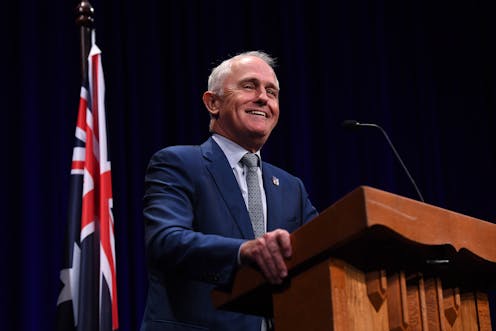The truth about political donations: there is so much we don't know
- Written by Lindy Edwards, Senior Lecturer in Politics, UNSW

The big story about the Australian Electoral Commission’s annual release of political donations disclosures is how little they really tell us. Over the last decade, the major parties have routinely only transparently disclosed 10-20% of their incomes as donations.
There is another 20-35% of party incomes that falls into a grey area, where accounting enables them to conceal the source of the money. Then there is another 50-70% of party incomes the public knows absolutely nothing about.
The precise splits for 2016-17 are:
This situation is able to happen because, federally, Australia has some of the most lax political donations laws in the developed world.
Read more: Australia trails way behind other nations in regulating political donations
A system full of holes
Political parties in Australia at the federal level only have to disclose payments of more than A$13,200. They are requested – but not required – to distinguish between “donations” and “other receipts”.
There are no caps on how much people can give, or who can give. And the disclosures are only released annually, in February each year, with no more than a name and address attached.
This might not sound too bad. But it is actually a system full of holes that can be exploited to hide where parties’ incomes are really coming from.
Read more: Explainer: how does our political donations system work – and is it any good?
The first problem is what parties declare to be “donations” and what they declare to be “other receipts”. In many cases, parties claim more than half of the payments they receive over the threshold are “other receipts”, even though the payments come as round numbers from those you would expect to be lobbying government.
One journalistic analysis found 80 cases where the donor had declared a payment as a donation, only to have the party claim it as an “other receipt”. An academic study concluded that most “other receipts” should be treated as donations for analytical purposes. However, there are some legitimate “other receipts”, such as union fees, share dividends, and proceeds from property sales.
There are also some crafty schemes parties use to make donations technically qualify as “other receipts”. They hold fundraising dinners, charging people large sums to attend, then report the payments as a fee for a service rather than a donation.
The second problem is parties using fundraising bodies to effectively “launder” the donations they receive. Donors give money to a fundraising body that then gives it to the party. This makes it difficult to work out where the money originally came from.
The very high disclosure thresholds also enable parties to engage in “donation splitting” – when a large payment is split into smaller amounts and paid to different party branches so each payment comes in under the reporting thresholds. Parties don’t even need to aggregate payments made on different days.
Donors are technically supposed to declare their payments if the combined value of their donations is over the threshold. However, they don’t have to disclose payments to fundraising bodies. And if a donor doesn’t disclose, there’s no way to know if anything is missing. The disclosure laws are notoriously weakly enforced.
Finally, a year’s worth of donations data is released in one huge data dump on one day. Thousands of lines of data are released. The data cannot be meaningfully sorted, or tallies that mean anything easily calculated.
Who is funding our political process?
In today’s resource-starved media environment, journalists are reduced to identifying the biggest payment that hasn’t been split or concealed, and attempting to make hay of those unsophisticated enough to have allowed themselves to stand out.
The story fades after a day or two, and the real secrets of who is funding our political process remains buried.
Perhaps the most insidious aspect of the disclosure process is that the payments are only revealed months after they were made.
While small businesses have to pay tax quarterly, and the Australian Tax Office has apps that enable us to collect our receipts in real time, politicians only have to release their accounts annually. This means we only get to see the money that changed hands between stakeholders in the midst of major policy battles months after the issue has disappeared from the headlines.
The annual February festival of lampooning the largest visible donor lulls Australians into a false sense of security that there is a functioning political donations disclosure regime in place. Few realise how ineffective our political donations disclosure regime is, and how badly it is in need of reform.
Authors: Lindy Edwards, Senior Lecturer in Politics, UNSW
Read more http://theconversation.com/the-truth-about-political-donations-there-is-so-much-we-dont-know-91003



